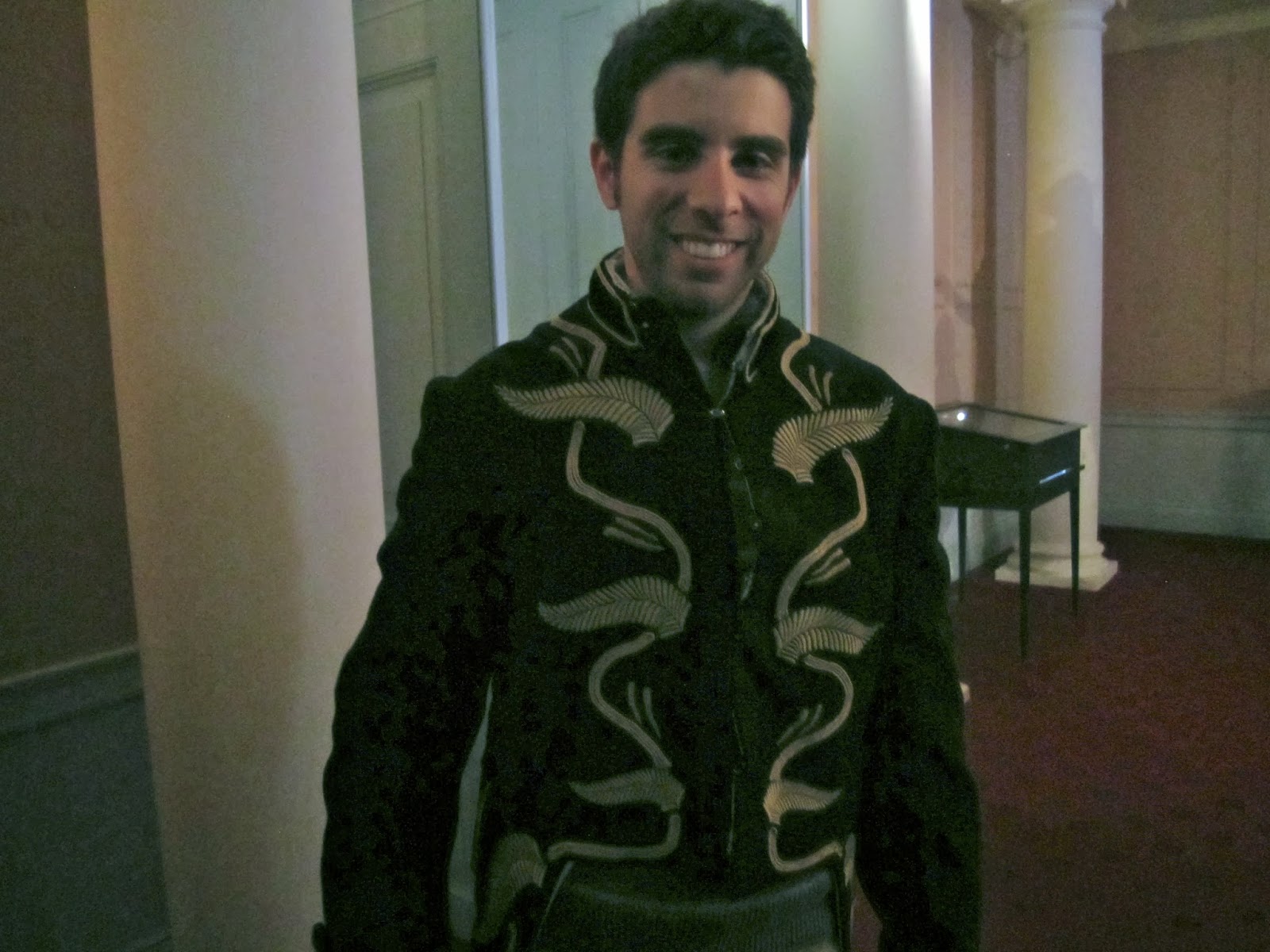Today, Kensington Palace is the official residence of the Duke and Duchess of Cambridge, Prince Harry, and the Queen's cousins and their spouses: the Duke and Duchess of Gloucester, the Duke and Duchess of Kent, and Prince and Princess Michael of Kent. Kensington Palace was previously the home of Diana, Princess of Wales and the Queen's late sister, Princess Margaret.
Kensington Palace is situated inside of Kensington Park. From the Tube stop at Queensway, you enter Kensington Park along this path and make your way to the palace.
And here is the palace.
The most famous view of Kensington Palace is this memorial to Queen Victoria, who was born here in 1819 and lived here with her widowed mother until she ascended the throne in 1837. Kensington Palace is open year-round to visitors, and they have numerous exhibits to view.
Owing to the fact that Queen Victoria was born here, there was a large exhibit dedicated to her life, her marriage, her children, and her long reign.
This room is where Victoria, aged eighteen, held her Accession Council in the presence of her Privy Councillors shortly after she became Queen.
Here I am donning a replica of the cloak worn by the Archbishop of Canterbury when he attended the Queen's Accession Council.
This is Queen Victoria's wedding dress. When she married Prince Albert of Saxe-Coburg and Gotha in February 1840, she was credited with starting the popular tradition of a bride wearing white to her marriage. Though she was the first to popularize this, she was not the first royal bride to wear white.
Portrait of Queen Victoria's husband, Prince Albert. Born in the German dukedom of Saxe-Coburg and Gotha, he was Victoria's first cousin (Victoria's mother was his father's sister). Their marriage produced nine children and is well remembered for being a true love match. When Albert died of typhoid fever at the age of 42, Victoria was inconsolable. She donned widows' weeds for the remainder of her long life, and for a number of years seriously damaged the image of the monarchy by refusing to appear at public events and at the state opening of Parliament.
A bust of Prince Albert.
This little toy allows you to match up each of Queen Victoria's nine children with their respective spouses. Being the history nerd that I am, I did not need this device to be able to name all of her children and the people they married. Not sure if I should be bragging about something like that, but that's the truth.
Visitors are not allowed access to it, but at the top of these stairs is the room where Queen Victoria first learned that her uncle, King William IV, had died and she had now become the monarch.
Uniform and dress worn by Prince Albert and Queen Victoria.
This is the State Apartments used by Kings George I and George II when they resided at Kensington Palace. George II became the last British monarch to use Kensington Palace as a main residence. After him, it became the home of other minor members of the royal family, while the monarch's official London residence was at St. James's Palace. Buckingham Palace became the official London residence of the British monarch during Queen Victoria's reign.
Looking out the window from the State Apartments, you can see the rest of Kensington Park as well as the statue in the foreground of King William III and the Gold Gates.
Beautiful fireplace in the State Apartments.
Portrait of King Charles I in the State Apartments.
Coronation robes of King George III.
View from inside the palace of the Queen Victoria monument and the Round Pond in Kensington Park.
The robes of the Knights of the Order of the Garter, the most senior of chivalry orders in the United Kingdom.
The Cupola Room, the principal state room where the King would receive dignitaries and courtiers.
The gorgeous ceiling of the Cupola Room.
Looking out at the Orangery of Kensington Palace.
The Gold Gates at the east facade of Kensington Palace. When Diana, Princess of Wales died in 1997, these gates were the place where thousands of bouquets, cards, balloons, and candles were left by mourners.
Statue of King William III, the Dutch prince who led armies into Great Britain to overthrow his father-in-law, King James II, in what was known as the Glorious Revolution. William III was then proclaimed co-monarch with his wife, James' daughter Mary, and they reigned together as King William III and Queen Mary II until Mary died at Kensington Palace in 1694.
Me standing outside of the Gold Gates.
Looking out to the east of Kensington Park.
The Orangery at Kensington Palace, built as a garden for Queen Anne.









































































